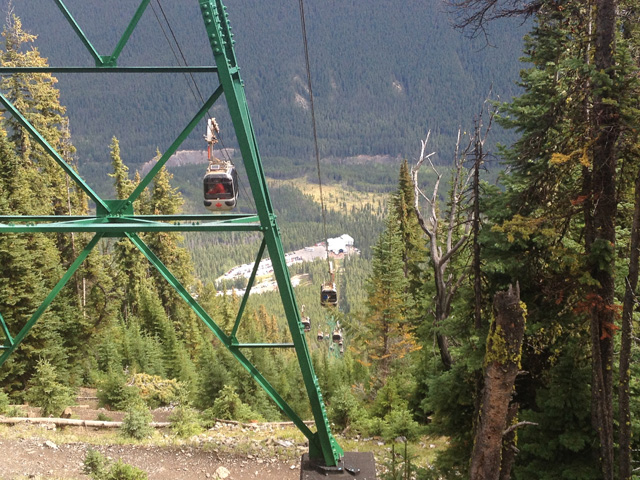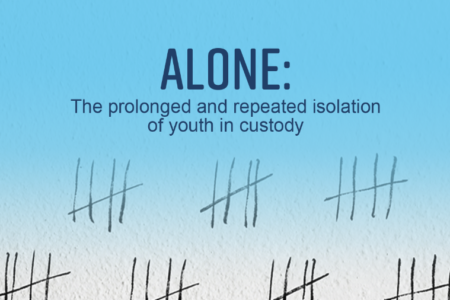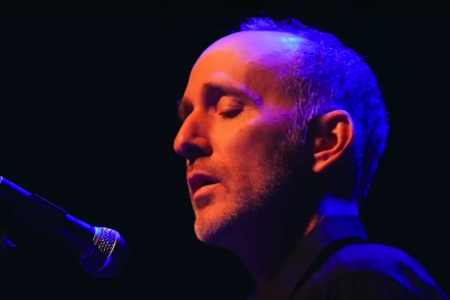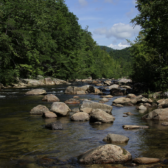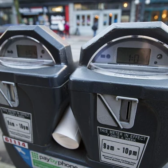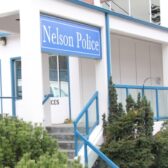Tramway idea swings down onto city stage with vision for an alpine connection
A group of Nelsonites are looking to connect the mountain peaks around the city to the valley, and the alpine with the downtown, like never before.
On Monday night a group from the Silver King Skyride Development Association appeared before city council and fleshed out their idea to bring about a skyride from Silver King mountains to the city, through the Skyride Feasibility Initiative.
Entitled “Access to the Inaccessible,” the project is aimed at providing locals and tourists of all ages the opportunity to experience the mountains around the city through a tramway to Nelson.
Lukas Armstrong, Phil Scott, Graeme Leadbeater, Jay McKimm, Tom Abraham and Mitchell Scott of the Silver King association want people to have the “opportunity to experience the physical health and well-being, adventure, learning, pure fun and spiritual fulfillment that comes from spending time up high.”
The project has been two years in development with over 30 meetings already, nestled under the wing of a volunteer organization of over 60 people.
“Access, yes, but also sensibility. It reflects what the place is about and the ethos of the people who live here,” said Scott in the presentation delivered to council.
“Seen as something that’s truly unique, it’s not a resort, it’s an arterial connection between the mountain-top and the valley bottom.”
A tramway vision has been attempted and talked about before in the city, so council was not as surprised when it came forward, said Mayor Deb Kozak.
“It’s a big vision, and not the first,” she said. “As for who will fund this and how it will proceed, that will part of the feasibility study should it progress to the next stage.”
The proponents have asked the Regional District of Central Kootenay and city for contributions for the study. Council has directed staff to explore funding options and provide a report at its next meeting on July 4.
The principles of the project would be to provide a four-season, year-round operation that would incorporate a multitude of commercial opportunities, including equipment rentals, guiding, teaching, trail building, food and beverage, events and workshops.
It would be a regionally oriented Kootenay amenity constructed in a climate of a development-free zone — meaning no associated real estate sales.
Local people would be involved in its envisioning, planning, creation and operation, and it would be affordable for locals.
There would be a “bias” toward education — environment, history and backcountry safety — with career development opportunities, like a partnership with Selkirk College.
The tramway would create opportunity by building tourism-based infrastructure that is an “economic engine for local employment,” as well as business development, the association told council.
According to the overarching vision, the hope is that “five years after it’s in place, the Silver King Tramway becomes internationally recognized as a fundamentally unique connection between a mountain city and it’s surrounding mountain environment.”
The Tramway could become an international draw to the Kootenays — not just Nelson.
The next steps in the project include a feasibility study that will incorporate a study of the market, the economics impacts of the project, the environmental cost and the capital requirements.
Council backs the Civic project
A preservation project for the community’s cornerstone is being backed by the city with more than just rhetoric.
A letter of intent has been authorized for the amount of $345,000 for the project — the city’s portion funded out of the reserves — when the city submits an application under the Canada 150 Infrastructure Program for the Civic Centre Arena Preservation Project.
With a total budget of $680,500, the project could receive a Canada 150 grant infusion in the neighbourhood of $340,000 if the city was successful in its application.
The project has four major components: indoor rehabilitation; electrical work; work with electrical servicing; and roofing.
“The city is working with the recreation commission toward future planning with all facilities,” said Mayor Kozak about the project. “This includes the entire Civic Centre. This flows out of the Recreation Master Plan.”
The Nelson Civic Arena has been a community cornerstone since 1936. But when mould and lead issues were identified in 2015 the city spent $65,720 on temporary mitigation to enable a 2015 ice season, with some areas closed to the public.
The application for a Canada 150 grant to undertake further preservation works will ensure that the arena can continue to serve the community in the future, said Coun. Bob Adams.
“The intent is to make an application … (and) the plan is keep it open,” he said.
Indoor rehabilitation would include removing the lead-painted wood bleachers and the concourse and bleacher floorboards, replacing the existing storm water management system, and disinfecting the areas under the south bleacher structure impacted by mould.
Shotcrete with a vapor lock would be installed, as well as ventilation, under the south bleachers. The concourse and bleacher area would have its floorboards reinstalled, and the women’s washroom/change room closed due to mould would be refurbished.
The energy-inefficient dehumidifiers would be replaced with improved units, the existing lighting would be improved, as would the delivery of electrical service to the building.
The asphalt shingle roof would be replaced with new sheathing and 50-year fiberglass laminated asphalt shingles with recycled rubber content.



